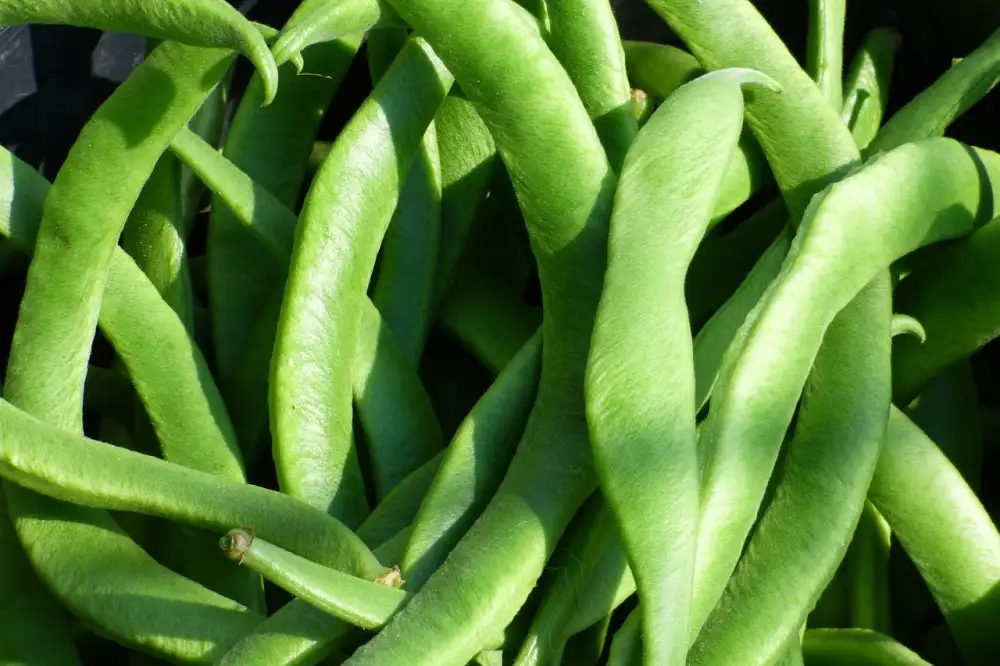Discover the Versatility of Runner Beans: Elevate Your Home Cooking with this Nutritious Ingredient

- Health benefits of runner beans: Boosting your immune system and promoting digestion
- Growing runner beans at home: Step-by-step guide for a successful harvest
- Cooking with runner beans: Delicious recipes and creative ways to incorporate them into your meals
- Preserving runner beans: Tips for freezing, canning, and drying to enjoy them year-round
- Runner beans in traditional cuisine: Exploring their role in different cultures and culinary traditions
- Runner beans as a sustainable choice: Environmental benefits and why they are a great option for eco-conscious food enthusiasts
- Troubleshooting common issues when growing runner beans: Solutions for pests, diseases, and other challenges
Runner beans, also known as Phaseolus coccineus, are a versatile and nutritious addition to any home garden. These vibrant green pods are packed with vitamins and minerals, making them a healthy choice for your meals. With their mild flavor and tender texture, runner beans can be used in a variety of dishes, from salads to stir-fries. Whether you're an experienced gardener or just starting out, growing runner beans is a rewarding experience that will elevate your home cooking.
Health benefits of runner beans: Boosting your immune system and promoting digestion
Runner beans are not only delicious, but they also offer numerous health benefits. Packed with essential nutrients like vitamins A, C, and K, as well as fiber and antioxidants, runner beans can help boost your immune system and promote healthy digestion. The high fiber content aids in regulating bowel movements and preventing constipation. Additionally, the antioxidants found in runner beans help protect against cell damage and reduce the risk of chronic diseases. Incorporating these nutritious beans into your diet is a simple way to elevate your overall health.
Growing runner beans at home: Step-by-step guide for a successful harvest
Growing runner beans at home is a rewarding experience that allows you to enjoy fresh and nutritious produce right from your garden. Follow these steps for a successful harvest:
- Choose a sunny spot with well-drained soil.
- Prepare the soil by removing weeds and adding compost or organic matter.
- Sow the seeds directly into the ground, spacing them about 8 inches apart.
- Water regularly, keeping the soil moist but not waterlogged.
- Provide support for the plants to climb, such as trellises or poles.
- As the plants grow, pinch off the tips to encourage bushier growth.
- Watch out for pests like aphids or slugs and take appropriate measures to control them.
- Harvest the beans when they are young and tender, usually around 12-16 weeks after sowing.
By following these simple steps, you can enjoy a bountiful harvest of runner beans right in your own backyard!
Cooking with runner beans: Delicious recipes and creative ways to incorporate them into your meals
Runner beans are not only nutritious but also incredibly versatile in the kitchen. They can be used in a variety of recipes and add a unique flavor and texture to your dishes. Try incorporating them into stir-fries, salads, or even as a side dish sautéed with garlic and olive oil. You can also stuff runner beans with cheese or meat for a delicious appetizer. The possibilities are endless, so get creative and elevate your home cooking with this nutritious ingredient!
Preserving runner beans: Tips for freezing, canning, and drying to enjoy them year-round
Preserving runner beans is a great way to enjoy their delicious taste and nutritional benefits all year round. Freezing is a simple method that helps retain their freshness. Blanch the beans in boiling water for a few minutes, then transfer them to an ice bath to stop the cooking process. Once cooled, pack them into freezer-safe bags or containers and store in the freezer.
Canning is another popular preservation method. Start by sterilizing jars and lids, then blanch the beans briefly before packing them tightly into the jars. Fill the jars with boiling water or brine, leaving about half an inch of headspace. Seal the jars tightly and process them in a water bath canner according to recommended times for your altitude.
Drying runner beans is ideal if you prefer a longer shelf life. Stringing them up in a well-ventilated area allows for natural air drying. Alternatively, you can use a dehydrator set at a low temperature until they are completely dry and brittle. Store dried runner beans in an airtight container away from moisture.
By preserving runner beans through freezing, canning, or drying methods, you can savor their flavor and nutritional value even when they are out of season.
Runner beans in traditional cuisine: Exploring their role in different cultures and culinary traditions
Runner beans have a rich history in traditional cuisine across various cultures. In Mexican cuisine, they are often used in dishes like frijoles charros, a hearty bean soup. In Mediterranean cuisine, runner beans are a staple ingredient in casseroles and stews. In Ethiopian cuisine, they are commonly used in dishes like yataklete kilkil, a flavorful vegetable stew. Their versatility allows them to be incorporated into a wide range of traditional recipes, adding both texture and flavor to the dishes.
Runner beans as a sustainable choice: Environmental benefits and why they are a great option for eco-conscious food enthusiasts
Runner beans are not only a versatile and nutritious addition to your home garden, but they are also an excellent choice for eco-conscious food enthusiasts. These beans have numerous environmental benefits that make them a sustainable option. Firstly, runner beans are nitrogen-fixing plants, which means they have the ability to convert atmospheric nitrogen into a form that can be used by other plants. This helps improve soil fertility and reduces the need for synthetic fertilizers. Additionally, runner beans require less water compared to other crops, making them more water-efficient. They also have a low carbon footprint as they can be grown locally, reducing transportation emissions. By choosing runner beans in your cooking, you're not only elevating your food experience but also making a positive impact on the environment.
Troubleshooting common issues when growing runner beans: Solutions for pests, diseases, and other challenges
When growing runner beans, it's important to be aware of common issues that may arise. Pests such as aphids and slugs can damage the plants, but you can combat them by using organic insecticides or creating physical barriers. Diseases like powdery mildew and bean rust can also affect runner beans, so ensure good air circulation and avoid overwatering. Additionally, challenges like poor soil fertility or inadequate sunlight can hinder growth, so address these factors by enriching the soil and providing sufficient sunlight. With proper care and attention, you can overcome these challenges and enjoy a successful harvest of runner beans.
In conclusion, runner beans are a fantastic addition to any home garden and kitchen. Their versatility allows for endless culinary possibilities, from salads to stews and everything in between. Not only do they add a delicious flavor and texture to your meals, but they also provide numerous health benefits. With their high fiber content and immune-boosting properties, runner beans are a nutritious choice for every meal. So why not embrace the versatility and nutritional value of runner beans in your home cooking today? Elevate your dishes with this incredible ingredient and enjoy the many benefits it has to offer.
Published: 11. 12. 2023
Category: Food



